I absolutely adore string plants and they’re certainly gaining mass popularity globally thanks to their ability to add intrigue and texture to indoor and outdoor spaces.
Sure, some species can be a little tricky to care for, but overall, it is worth it once you have gorgeous tendrils of exciting foliage elevating your home aesthetics.
Most of these specimens come in the form of string succulents, as succulents lend themselves well to climbing and trailing habits. However, there are so many stunning species to choose from that honestly, it can be a little overwhelming when trying to select which string of plants is right for you and your home.
In this article, I will be highlighting 26 of my favourite string plants to grow at home in Australia in the hopes I can help you find the perfect picks for your next home gardening effort.
More...
26 String Plants to Grow in Your Home
1. String of Pearls (Curio rowleyanus)
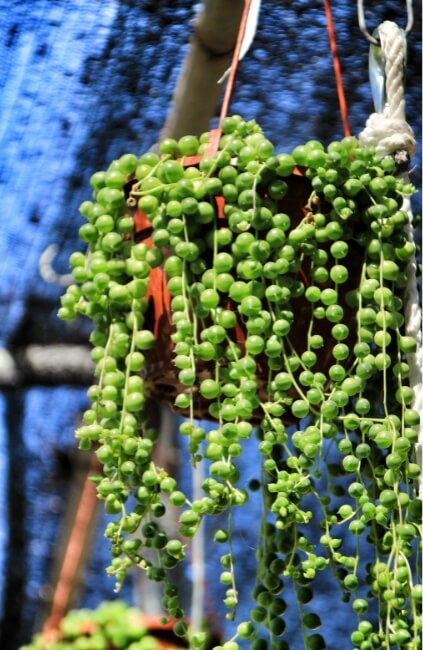
The beaded leaves, trailing elegantly along slender stems make string of pearls a nearly unique plant, but that doesn’t mean there aren’t countless wannabes out there, offering similarly stippled light through their trailing vines.
2. String of Watermelons (Curio herreanus)
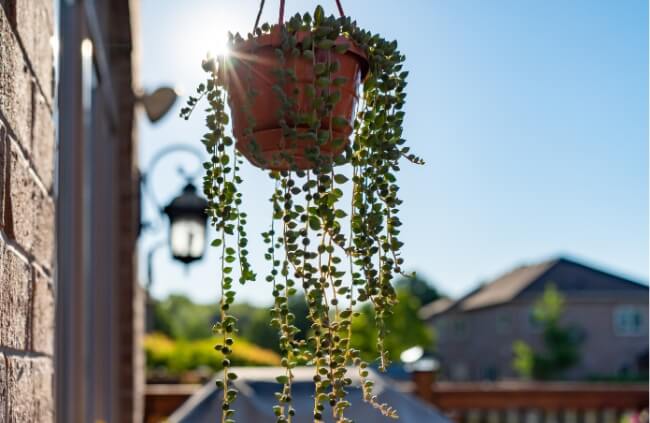
The semi-transparent string of watermelons is a fascinating plant to grow. It likes part shade if you can give it to it, but does need bright conditions. If you ever catch a glimpse of it with the sun shining through it, the translucence of the pointed, pinky-green succulent leaves is like something from another planet.
3. Curio archeri

Source: World of Succulents
Curio archeri shares its genus with string of pearls, but is a very different plant. Its succulent leaves tend to form tight florets, before trailing out in a rather gangly fashion. They are wonderfully gentle plants to grow in individual pots though, and definitely something different.
4. Candle Plant (Curio articulatus)

Source: Kambroo Plants
Curio articulatus, or the candle plant (sometimes sold as Senecio articulatus) is an upright plant that grows in a surprisingly similar way to string of pearls. While it doesn’t technically trail, as the succulent stems get longer and longer, they flop under their own weight, and the ivy-like succulent leaves (which have a variegated cultivar) are just delightful.
5. Curio avasimontanus
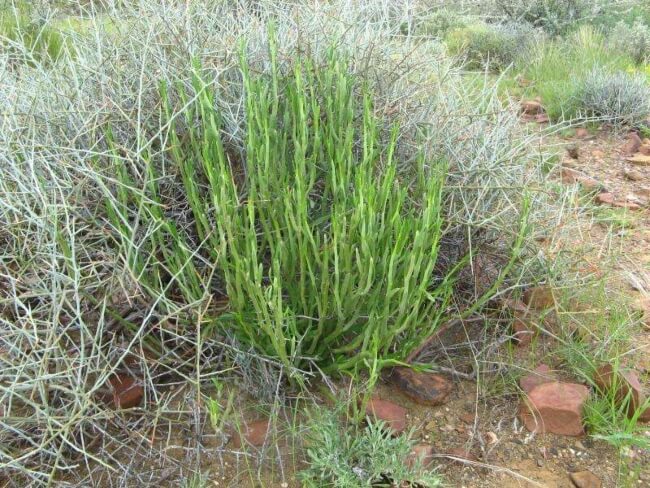
Source: Encyclopedia of Life
Another curious upright Curio is Curio avasimontanus, which grows pretty much like a cactus, with upright stem sections, each connecting to each other and developing from leaves. It’s not a string of plant, but it will grow in near identical conditions to string of pearls.
6. Blue Fingers (Curio crassulifolius)
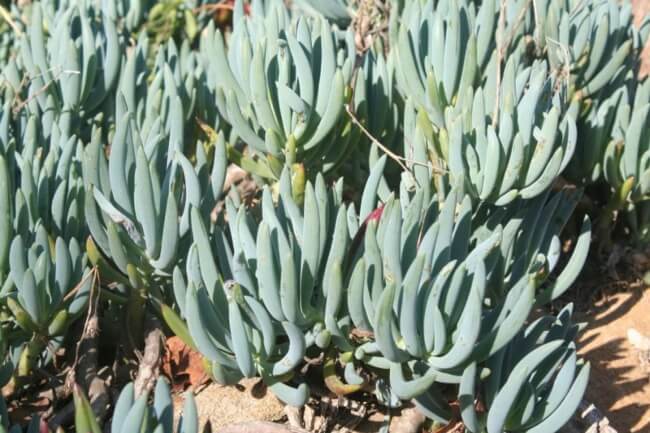
Source: Fynbos Corridor Collaboration
In the right setting, Curio crassulifolius offers a trailing succulent that will work outdoors, with hardy silvery foliage that heavily resembles lavender and works beautifully on gritty or sandy soil.


Get Your Free Guide:
Master Growing Australian Natives eBook
A Must Have Complete Guide for Every Australian Garden
Get Your Free Guide:
Master Growing Australian Natives eBook
A Must Have Complete Guide for Every Australian Garden
The upright leaves are slightly blue, and trail out from the centre of the plant, either dangling over walls or trailing flat along the ground to form mounds.
7. Blue straws (Curio talinoides)
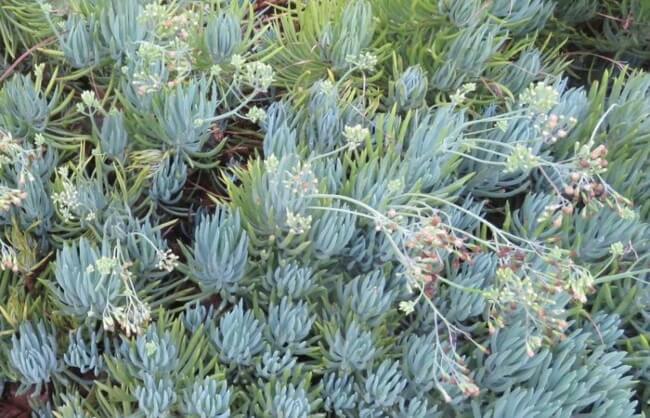
Source: PlantZAfrica
Curio talinoides is getting closer to the other string of plant forms, with trailing vines, but those vines are still thick stems, holding onto straw like blue foliage. It thrives in rocky conditions and can hold moisture for months without water.
8. String of Bananas (Curio radicans)
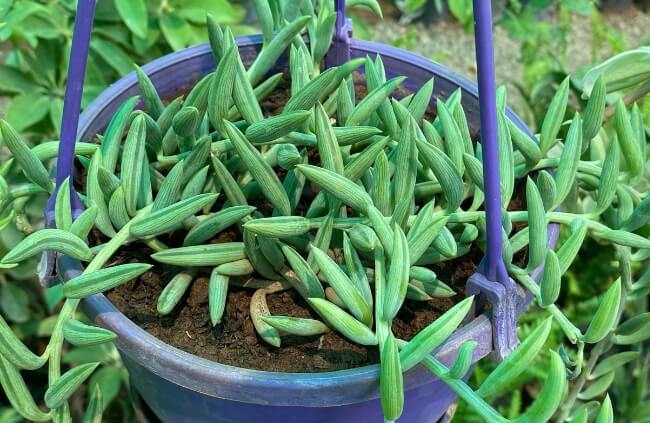
String of bananas is a true string of Curio. Its pointed, banana-shaped leaves are fleshy succulent forms that grow alternately just like String of Pearls. New growth is vibrantly pale green, even grey-green, but as the plant develops it becomes a bluey-green that holds its colour through all seasons, particularly as a house plant.
9. Curio sulcicalyx
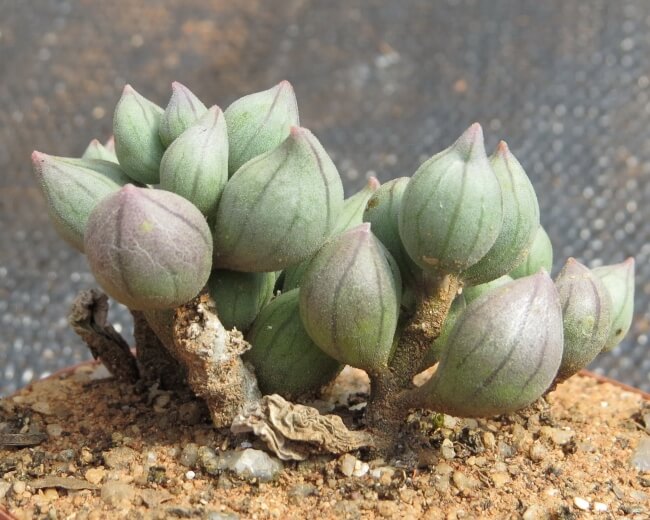
Source: Kambroo Plants
An obvious relative of string of watermelons, this diminutive succulent develops a tiny handful of leaves on short stems, and can grow in the most challenging conditions imaginable. Like string of watermelons, Curio sulcicalyx has a light pink hue to its leaf tip and deep veining down each leaf.
10. String of Tears (Curio citriformis)

Source: Pl@ntNet
This pointed version of Curio radicans is in fact a separate species, Curio citriformis, with lemon-shaped succulent leaves, perhaps giving it its species name. The pointed leaves are alternate but not as elongated as a string of bananas.
11. Blue Chalksticks (Curio repens)
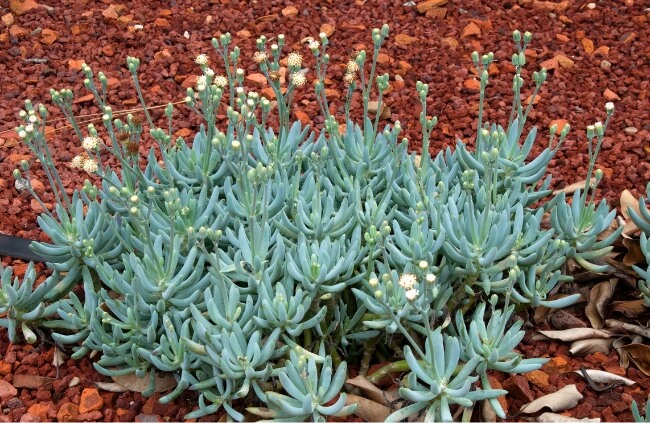
Curio repens, or Blue Chalksticks is a common houseplant, generally sold as an upright succulent. But, as it amateurs, that upright habit will outgrow its container, and spill gloriously out over the sides, develop trailing stems that will root easily into other pots, and can be propagated in a number of different ways.
12. Pondo Cliff Daisy (Curio pondoensis)
The Pondo cliff daisy is a fascinating trailing succulent, with long-reaching stems, and gorgeously two-toned leaves. The underside of each leaf is a vibrant blood-red, while the top is a subtle dusty green. It’s one of the most prolific flowering Curio species, and will generally grow happily in warmer parts of Australia on well-drained soil.
13. Curio muirii

Source: World of Succulents
The leaves of Curio muirii are really unique. They develop along straight trailing stems, but always grow from one side of the stem, leading to layered, scaled foliage.
It grows easily on open ground and can be propagated as a house plant with relative ease.
14. String of Beans (Curio hallianus)
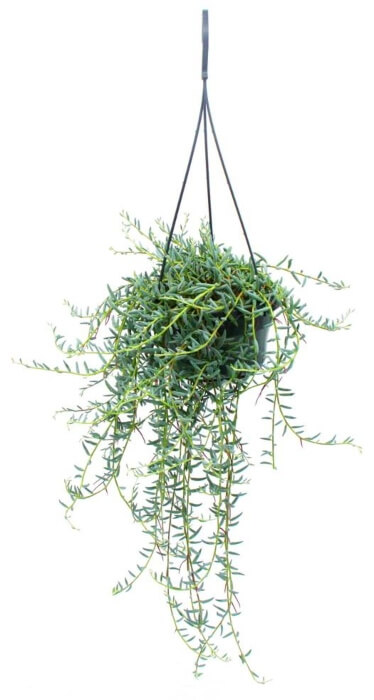
Source: Exotenherz
While it is easily mixed up with String of Bananas, String of Beans (Curio hallianus) is a distinct species. Its orange-red stems set it apart from others, but its elongated, pointed succulent foliage is similar to several other strings of plants.
15. Mount Everest Senecio (Curio ficoides)
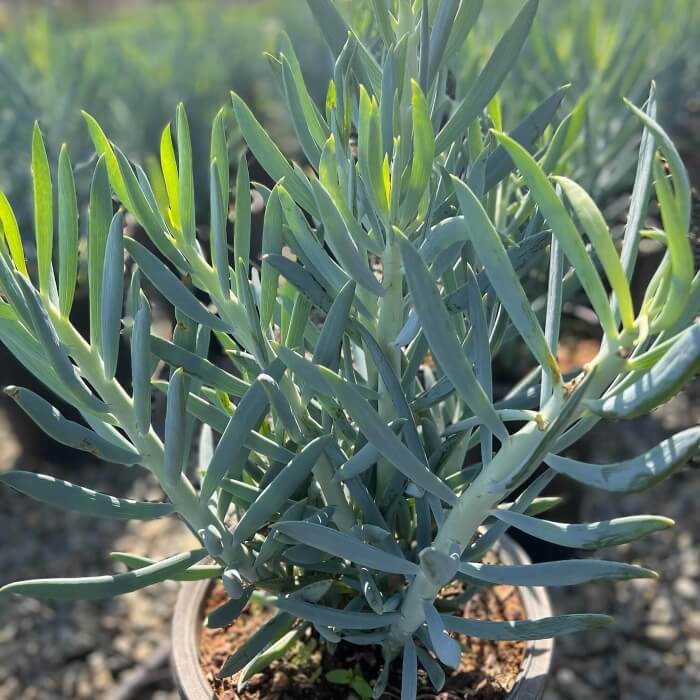
Source: Western Star Nurseries
One upright Curio, also caught in the renaming trap, is the Mount Everest Senecio, not quite inappropriately named thanks to reclassification. It’s not trailing, and it’s far from the stringy habits of other Curio plants, but it is a beautiful plant to grow outdoors in Australia.
16. Wedgeleaf Curio (Curio cuneifolius)
One of the harshest leaf shapes of any Curio has to be from Curio cuneifolius. Its bat-wing-like leaves will trail from pots and containers, adding completely unique forms to any indoor space.
17. Senecio herreianus ‘Purple Flush’
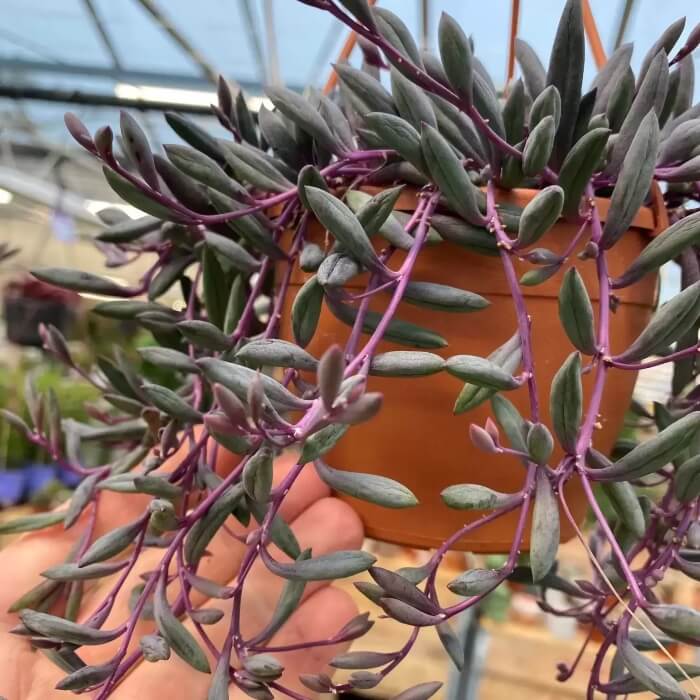
Source: Cowell's Garden Centre
This vibrant alternative to String of Pearls has vivid purple stems all year round, and if it ever gets stressed will turn purple from head to toe. With elongated succulent leaves, held on deep purple vines that can grow up to 1 m long, there are few strings of plants that come close to this in terms of colour and impact.
18. String of Buttons (Crassula perforata)

Crassula perforata, commonly called String of Buttons, looks exactly as you might imagine. The stems are fine and hidden between tightly alternating pointed leaves that form so evenly around the stem that it looks like a string of threaded buttons.
Young plants will grow upright before trailing downwards as they get heavier.
19. String of Hearts (Ceropegia linearis subsp. woodii)

String of hearts has spectacularly lovely heart-shaped leaves, with gently stippled tones of green, and a crisp darker leaf border. They can grow up to 4 m long, and work beautifully as house plants trailing across a veranda.
Refer to our in-depth guide to growing string of hearts for more details.
20. String of Turtles (Peperomia prostrata)

String of turtles, Peperomia prostrata, is an easy plant to grow and incredibly forgiving. If left unwatered for too long it might die back, but the healthy tips of stems can easily be replanted.
Its name comes from the geometric markings on each leaf, resembling a turtle shell, adding to the depth and texture of this delicate plant even at a distance.
21. String of Nickels (Dischidia nummularia)
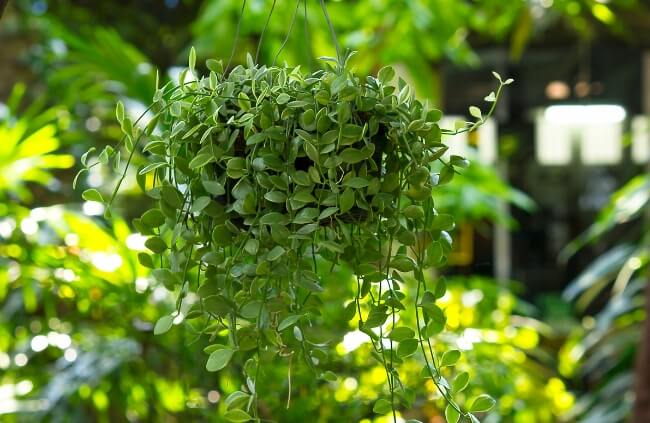
Dischidia nummularia is best known as the String of Nickels. Its leaves are about the size of a nickel, and generally rounded, growing from firm, but happily trailing stems or up to 60 cm. Pruning and regular propagation will keep your String of Nickels looking happy and healthy.
22. String of Needles (Ceropegia linearis)
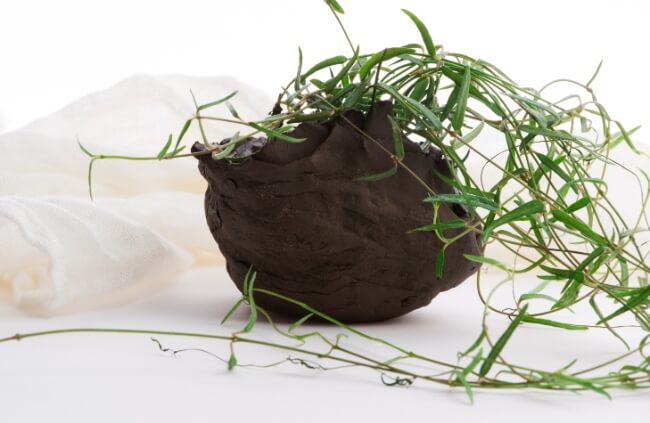
String of Needles is great if you’re looking for something a little bit different. Its leaves are elongated and succulent, and it will grow in largely the same conditions as more Curio plants, but they grow in pairs, and with wider spacing between each leaf.
The overall effect is much looser and especially good for bright rooms where some dappled light will add to your own comfort, and allow these fantastic pointed succulents space to thrive.
23. String of Pickles (Othonna capensis)
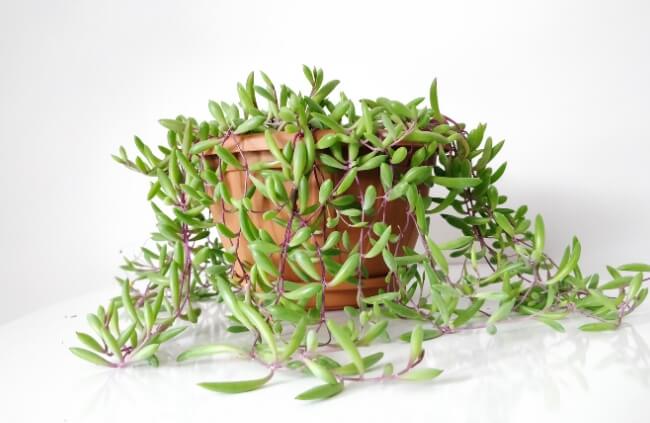
String of pickles are slow growing, and generally won’t grow much more than about 30 cm on each vine. In some cases, that’s a limitation, in others, it's a bonus. For smaller spaces and bathrooms, having trailing plants that don't get too big is a great benefit, so don't discount this small string of plants just yet.
24. String of Dolphins (Curio × peregrinus)
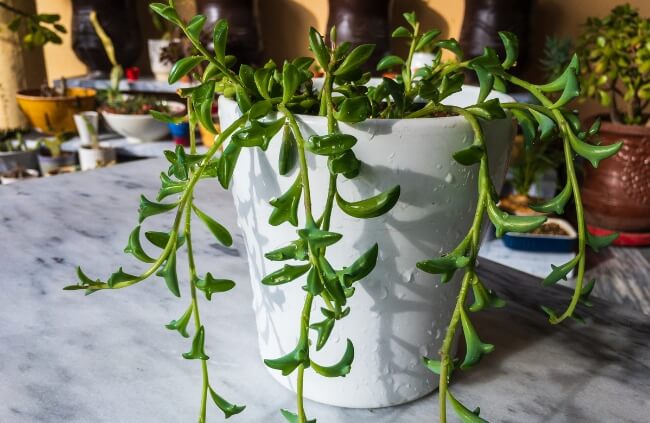
Its name might not need much explaining, thanks to the clearly defined fins on either side of each curved, pointed, succulent leaf, but it does take seeding to believe it.
This spectacularly filigree-laden plant is String of Dolphins, a Curio hybrid that has pretty much everything you could want from a houseplant. It’s simple to grow, easy to propagate, and surprisingly resilient.
So even if you think it's had it, cut it back, keep it moist, and it will almost always recover out of nowhere.
25. Jade Necklace (Crassula marnieriana)

If String of Buttons isn't cutting it for you, consider growing Crassula ‘Jade Necklace’. It’s the same plant in nearly all ways, but with a much richer colour, and slightly more distinct leaves, making for a more undulating string of succulent foliage.
26. Silver Dollar Plant (Xerosicyos danguyi)
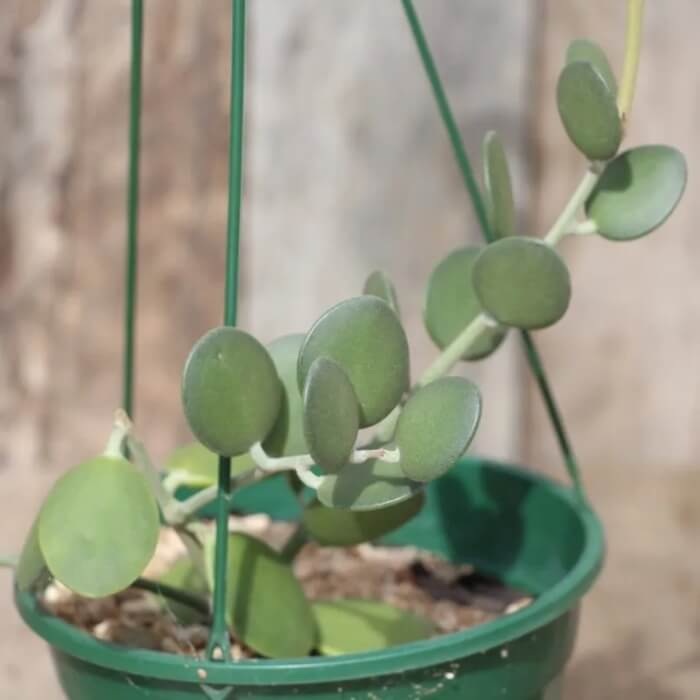
Source: Easy Succulents
There are several plants that share the common name ‘Silver Dollar Plant’, including the wonderful biennial Honesty, but it’s Xerosicyos danguyi that really owns it when it comes to houseplants.
This trailing succulent can be grown in a variety of ways, but however it’s grown, it always has the most stringly round leaves that are just plump enough to keep it going if you forget to water it.
Elevate Your Indoor and Outdoor Spaces with String Plants
So, there you have it, 26 gorgeous string plants to choose from, each offering its own set of benefits and aesthetics. Whether for flowers, foliage, or fascination, I’m certain that you will be able to find the perfect string plants for your home using this comprehensive guide.
Just be sure to properly care for them, give them the right levels of light, and try to avoid overwatering, and you should have thriving string plants around your living spaces in no time.
Published on November 2, 2023 by Maisie Blevins
Last Updated on September 10, 2024




